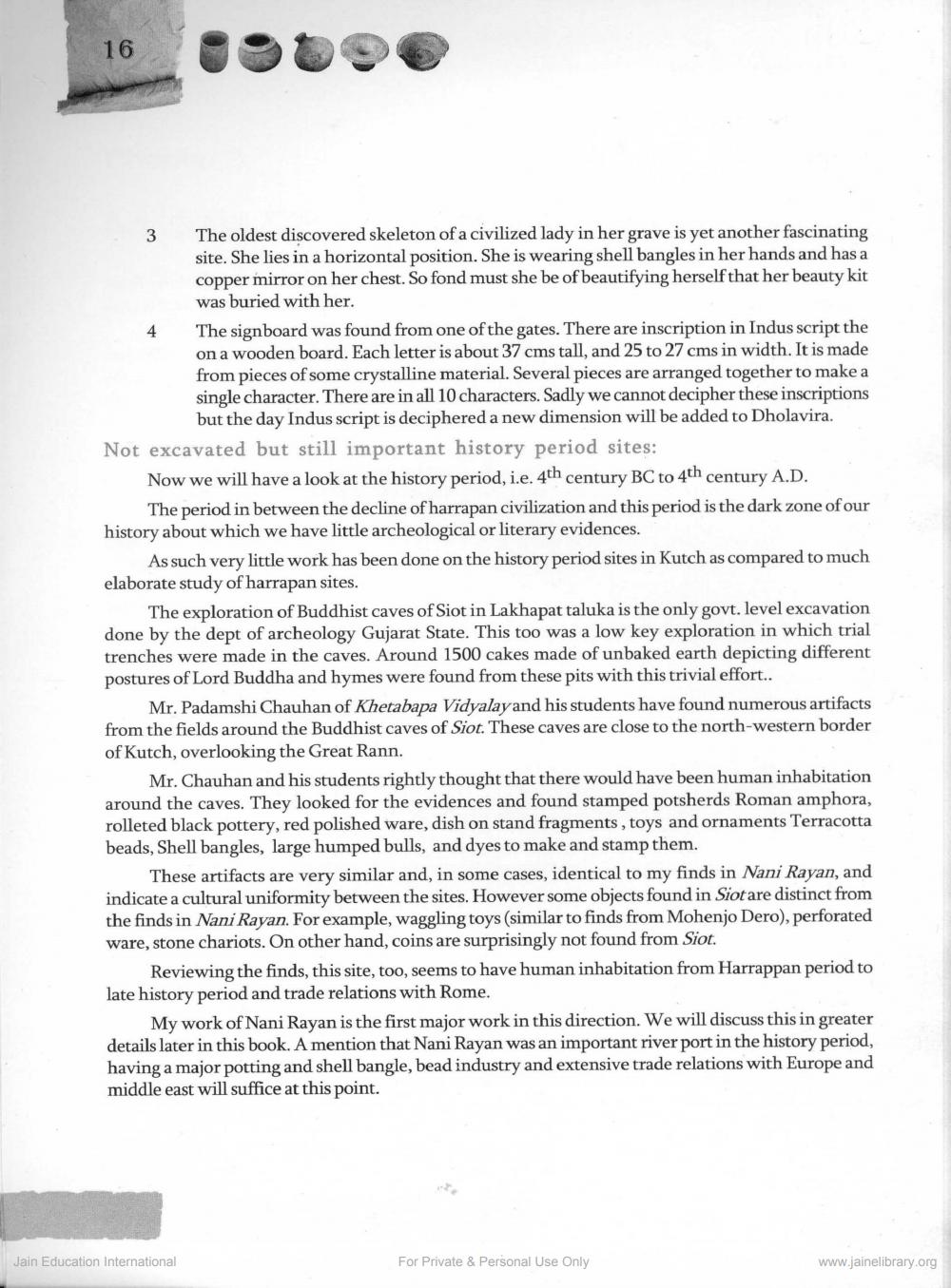________________
16
The oldest discovered skeleton of a civilized lady in her grave is yet another fascinating site. She lies in a horizontal position. She is wearing shell bangles in her hands and has a copper mirror on her chest. So fond must she be of beautifying herself that her beauty kit was buried with her. The signboard was found from one of the gates. There are inscription in Indus script the on a wooden board. Each letter is about 37 cms tall, and 25 to 27 cms in width. It is made from pieces of some crystalline material. Several pieces are arranged together to make a single character. There are in all 10 characters. Sadly we cannot decipher these inscriptions
but the day Indus script is deciphered a new dimension will be added to Dholavira. Not excavated but still important history period sites:
Now we will have a look at the history period, i.e. 4th century BC to 4th century A.D.
The period in between the decline of harrapan civilization and this period is the dark zone of our history about which we have little archeological or literary evidences.
As such very little work has been done on the history period sites in Kutch as compared to much elaborate study of harrapan sites.
The exploration of Buddhist caves of Siot in Lakhapat taluka is the only govt. level excavation done by the dept of archeology Gujarat State. This too was a low key exploration in which trial trenches were made in the caves. Around 1500 cakes made of unbaked earth depicting different postures of Lord Buddha and hymes were found from these pits with this trivial effort..
Mr. Padamshi Chauhan of Khetabapa Vidyalay and his students have found numerous artifacts from the fields around the Buddhist caves of Siot. These caves are close to the north-western border of Kutch, overlooking the Great Rann.
Mr. Chauhan and his students rightly thought that there would have been human inhabitation around the caves. They looked for the evidences and found stamped potsherds Roman amphora, rolleted black pottery, red polished ware, dish on stand fragments, toys and ornaments Terracotta beads, Shell bangles, large humped bulls, and dyes to make and stamp them.
These artifacts are very similar and, in some cases, identical to my finds in Nani Rayan, and indicate a cultural uniformity between the sites. However some objects found in Siot are distinct from the finds in Nani Rayan. For example, waggling toys (similar to finds from Mohenjo Dero), perforated ware, stone chariots. On other hand, coins are surprisingly not found from Siot.
Reviewing the finds, this site, too, seems to have human inhabitation from Harrappan period to late history period and trade relations with Rome.
My work of Nani Rayan is the first major work in this direction. We will discuss this in greater details later in this book. A mention that Nani Rayan was an important river port in the history period, having a major potting and shell bangle, bead industry and extensive trade relations with Europe and middle east will suffice at this point.
Jain Education International
For Private & Personal Use Only
www.jainelibrary.org




